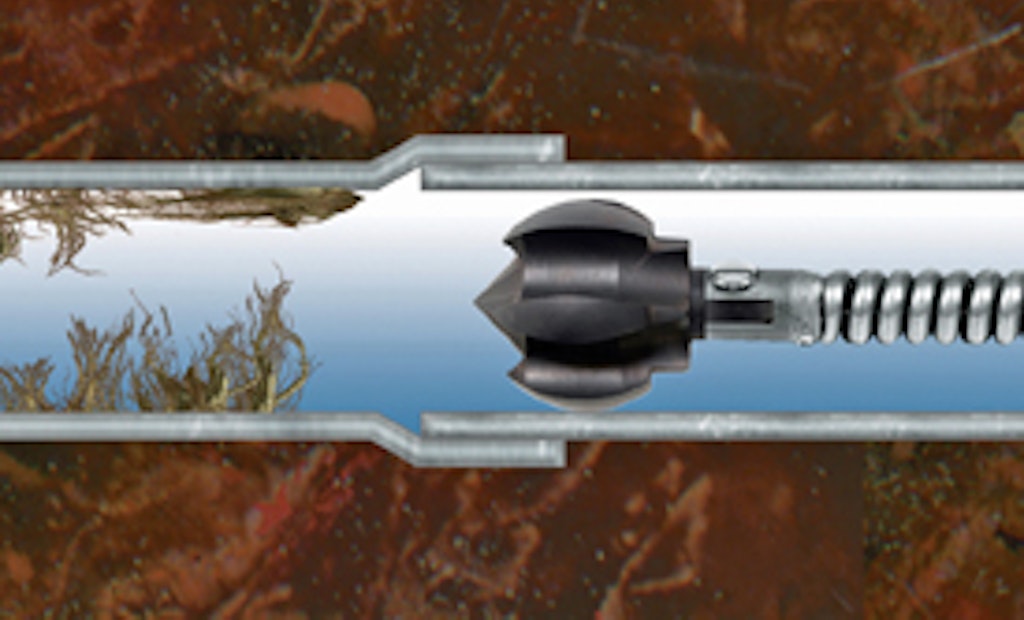Interested in Inspection?
Get Inspection articles, news and videos right in your inbox! Sign up now.
Inspection + Get AlertsChoosing the right drain cleaning machine for the job is only half the battle. If you don’t choose the right cutting tool as well, you’ll make the job twice as hard and take twice as long to get done. Choose the right tool and you’ll get the line clear the first time.
Clearing sinks and tubs: Small-diameter drains require smaller, more flexible cutters to negotiate the tight bends and traps in the line. A boring gimlet or an arrow head are good starting tools for small lines. If you are having problems getting around a tight bend you can switch to a down head boring gimlet or flexible arrow head. You can also adapt any cutter to become a down head by using a down head fitting between the connector and cutter.
Retrieving loose objects: Sometimes you have to be a hero and recover a lost ring, or get a child's toy or a diaper out of a drain. A retrieving tool (a cone-shaped spring) is designed for just that. Once the open end of the springs hook onto the object, stop the rotation of your machine and pull the cable out manually so you don't lose your prized catch.
Cutting tree roots: Even though you'll be tempted to go in with a big root cutter first, it is better to start with a smaller cutter like the spear head or 2-inch U-cutter to get the water flowing first. Then switch to a larger root cutter like a heavy-duty saw blade, root ripper or ClogChopper. Don’t be impatient. Guide the cable slowly back and forth to cut through the stoppage thoroughly. If you go too fast, you risk getting caught and damaging the cable.
Clearing grease and ice clogs: The best tool for these stoppages is a water jet, not a drain snake.
To download a free Tool Selection Guide, visit www.drainbrain.com. To ask questions, email info@drainbrain.com or call 800/245-6200.






